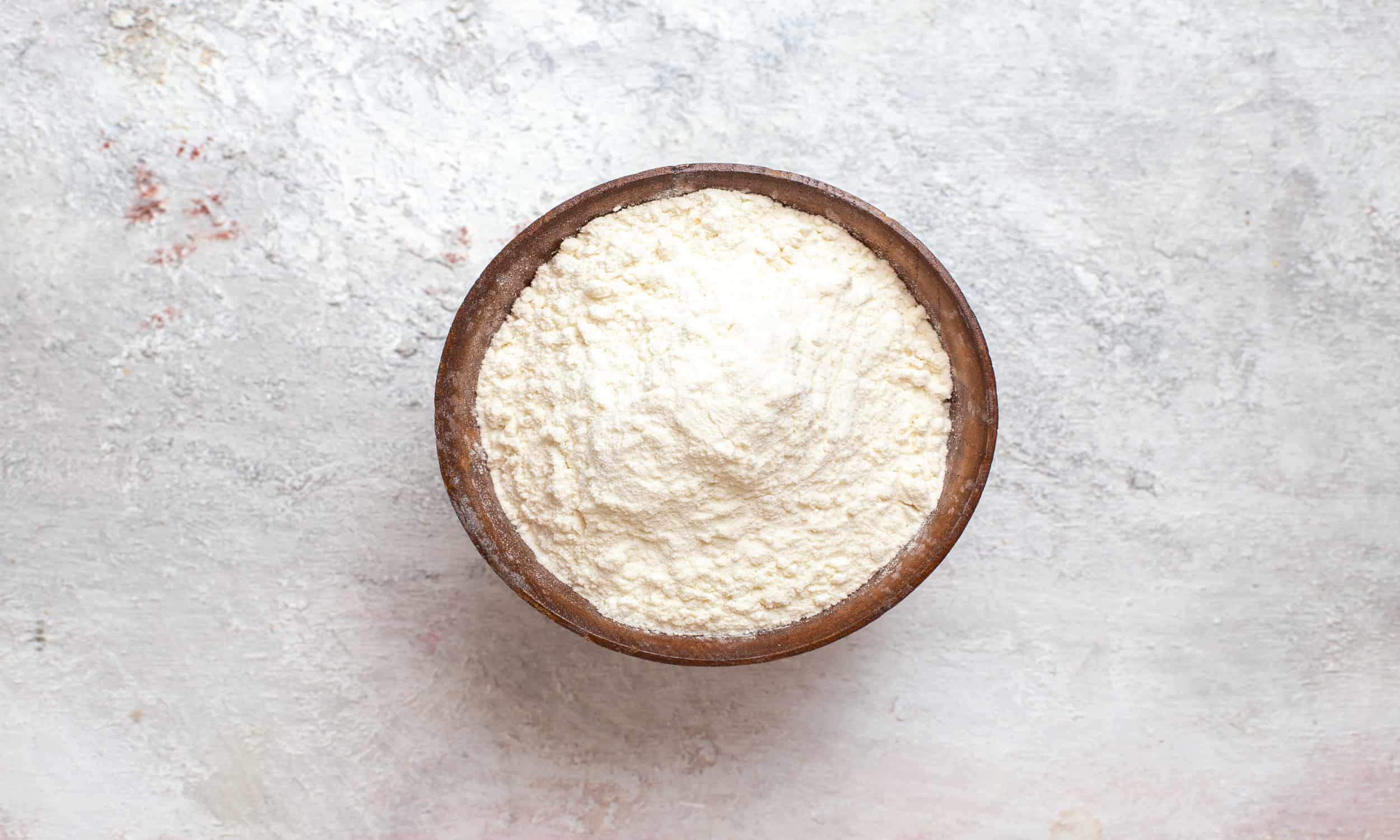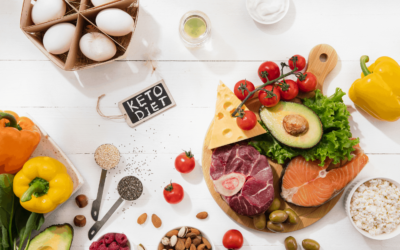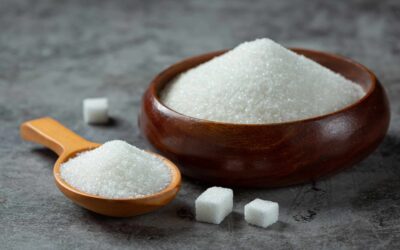When it comes to cereal grains and their products, people often ask questions regarding the gluten content present in them. If we take the example of cornstarch, most of the consumers ask the question: Is cornstarch gluten-free?
Well in the case of corn grain, in its natural form, corn is actually gluten-free. Similarly, if we talk about pure cornstarch which is composed of 100% cornstarch only, that is absolutely gluten-free but there are chances of it getting contaminated with traces of gluten if the cornstarch is being manufactured in a factory that also manufactures gluten-containing food.
Well, what is gluten and why are people too conscious about its presence? Why do people usually avoid food that may contain gluten in them?
As a matter of fact, gluten is mostly found in cereal grains and is a group of seed storage proteins. People who avoid gluten compounds are mostly the ones suffering from celiac disease and cannot tolerate gluten in their diet, as it can damage their intestines and can affect nutrient absorption.
WHAT IS CORNSTARCH?
Cornstarch is processed from the endosperm of corn in the form of a fine, white powder. It is a carbohydrate and comes from a single ingredient which is corn. It is also known as corn flour. It is commonly used in the kitchen. People use it to cook different dishes and in baking as well. As compared to wheat flour, cornstarch is a powerful thickener.
HOW IS CORNSTARCH MANUFACTURED?
The production of corn starch begins in the factory where the manufacturer takes corn kernels to grind them. After that, they wash them for the sake of separating the starch components from the corn’s fiber, protein and oil components. Upon completing this process, we get a fine white powder which we call cornstarch or sometimes corn flour.
GLUTEN-FREE CORNSTARCH
The endosperm of the corn which is grinded and crushed in order to obtain the cornstarch is gluten-free completely. Hence it is clear that originally manufactured cornstarch is also gluten-free. But, before using any such product, always make sure to confirm that the product is gluten-free or not.
It is necessary to check the label because the cornstarch might be at a risk of getting cross-contaminated with gluten from other products that may also get manufactured in the same industry where the cornstarch is manufactured and packed.
If there is risk of cross-contamination, then the manufacturer will definitely mention the details on the label attached with the product.
All the people having less or zero tolerance to gluten should never forget to check the label first and make sure that the product they are using is completely gluten-free. Individuals that suffer from celiac disease react differently to certain ingredients and there is a possibility that they might not have any reaction to cornstarch if it is not gluten-free.
BENEFITS OF CORNSTARCH
Cornstarch is a versatile ingredient. It enhances the taste and flavor of many foods and has some health benefits as explained below.
Low Nutritional Content
According to the nutritional index of cornstarch, it does not contain any fiber, protein, fat, or vitamin. Due to such low nutritional status, cornstarch has very limited health benefits. If moderately incorporated in the diet along with the other nutrient dense food, it would be a great fit for a healthy diet. But keep the fact in mind that consuming it in high amounts regularly will adversely affect the health of the consumer and may contribute to increased blood sugar levels.
High Calorie Content
The cornstarch nutritional index claims that it contains 488 calories. Those individuals who are underweight and are looking to gain weight more quickly should use food in which cornstarch is used as an ingredient as it will increase their calorie intake. But it should be used in adequate amounts in the diet and the fact should not be neglected that it has high-calorie content. The excessive quantity of cornstarch might show adverse effects rather than contributing positively to the health of its consumers.
Great Wheat Flour Substitute
As mentioned earlier, cornstarch is gluten-free, hence it is one of the great wheat flour substitutes for the sufferers of celiac disease or the ones with no tolerance for gluten products. Rather than using flour as an ingredient, they can incorporate cornstarch in their diet but keep the fact in mind that if you are using cornstarch, then use it in a less amount than you would use flour. It is because according to its composition, little amount is enough to produce the desired results.
Aids in the Management of Dysphagia
In old age, people often suffer from a condition known as dysphagia. In this condition, there is difficulty in swallowing. To improve bolus control in such individuals, thickened liquids are often used which improve swallow safety and prevent aspiration as well. Cornstarch can be used for the thickening of liquids. Many people use cornstarch as a traditional thickener to cope up with the condition of dysphagia.
Cooking WITH CORNSTARCH
Whenever you are using cornstarch for cooking, always first check the label in order to make sure that it is gluten-free. When you are sure that the cornstarch you are using is gluten-free then you can consider some of the following tips for cooking as they may help you to use the cornstarch properly.
Using as a Thickener
If you are using cornstarch as a thickener, use it in a less amount than you would use flour because it is a much more powerful thickener and its little amount is enough to produce the desired effects.
Adding to Hot Liquid
In order to avoid clumping, before adding cornstarch into a hot liquid, always mix it with any liquid at room temperature first. As cornstarch breaks down more quickly than flour, so always add it at the end of cooking according to the method mentioned earlier.
Avoid Freezing Cornstarch Mixed Food
As compared to recipes made with other thickeners, you should avoid freezing recipes made with cornstarch. Soups and sauces thickened with cornstarch do not tend to reheat.
Avoid Using Cornstarch as Complete Replacement
Specifically talking about baking, in order to give baked goods their structure and rise, cornstarch does not contain the protein needed to do so. Hence, you should avoid using cornstarch as a complete replacement of flour in baking.
USES OF CORNSTARCH
Cornstarch, or also called corn flour, is used mainly in the kitchen for cooking and baking purposes but it is also used out of the kitchen for different purposes.
Household Uses
Apart from cooking and baking, cornstarch is also quite beneficial for many household purposes as well. Like in the making of dry shampoo, matte nail polish, deodorant skin relief, skin relief, relaxing milk bath, chafing solution, Athlete’s foot preventative, detangling agent for hair knots, blister relief, bug bite relief, etc.
Other Uses
Cornstarch is effective in reducing friction between ropes of fibers or shoelaces as well in order to help to untie the knots. It can also be used to the natural shine of silverware. All you have to do is just mix cornstarch and water in the small bowl and then rub the mixture onto the silverware with the help of a damp cloth and be sure to wash the silverware afterward.
It can also be used for ironing clothes. Add 1 or 2 tablespoons of cornstarch to a spray bottle with 2 cups of water in it. Spray the liquid on the clothes and allow it to sit for at least 1 minute before ironing. If you need to establish an extra grip for holding a tennis racquet or other sports equipment, you should add a bit of cornstarch to your hands to improve your grip and to counter sweaty palms.
It is also wise to use cornstarch as a stain remover. In order to remove an oil stain, sprinkle a little amount of cornstarch over the stain. After 2 or 3 minutes, wipe it and then apply the stain remover to remove the stain completely as it was never there before.
Other than that, cornstarch can also be used to assist in cleaning your carpets. Sprinkle cornstarch over your carpet and then after 30 minutes, vacuum it normally. This will always keep the carpet fresh just like a newly bought one. It is also very effective for cleaning stuffed animals and fabrics. The method is quite simple. Just put a small amount of cornstarch onto the stuffed fabric or animal. After 5 minutes, remove it with a damp cloth.
Cornstarch can also remove grease splatter from walls. On a small cloth, add cornstarch and rub them over the grease gently and it will eventually come off. In order to give your pet a dry bath and to clean all the smelly oils from its fur, use a small amount of cornstarch with a brush over your pet’s fur gently to get its dry bath done properly.
GLUTEN-FREE ALTERNATIVES
If you are not sure about the cornstarch that you are using is gluten-free or not, or the gluten-free cornstarch is out of stock, then in such situations you can try some gluten-free alternatives as follows:
Rice Flour
Rice flour is naturally gluten-free and is colorless when mixed with water. It is made of finely grounded rice and works quite well for thickening clear liquid. If you are using it in place of cornstarch, then you have to use it twice as much as rice flour to get the same effect.
Ground Flaxseed
Ground flaxseed is very high in fiber and forms a jelly by absorbing liquid when mixed with water. But, the consistency of ground seed is very gritty.
Potato Starch
This ingredient is little in flavor but it is high in carbs. It can be substituted at a 1 to 1 ratio. It is made by crushing potatoes, and then the starch released from it is allowed to dry into a powder.
Tapioca
Tapioca can be substituted at a ratio of 2 tablespoons per 1 tablespoon of cornstarch. It is extracted from the cassava root, ground into a pulp which is then dried into flour.
Arrowroot
Arrowroot contains more fiber than cornstarch but when it is mixed with water, it forms the same type of clear gel. It is basically starchy flour derived from the Maranta genus of plants.
Xanthan Gum
By fermenting sugar with bacteria called xanthomonas campestris and then drying and powdering the resulting gel, we will get this vegetable gum. It can be used in small amounts in order to thicken large quantities of liquid and can be used in the ratio of 1 to 1 as a substitute to get the desired results.
Guar Gum
This vegetable gum is made from a legume known as guar bean. It is low in calories but high in fiber because it is made by removing the outer husk of the bean, then the starchy endosperm is ground and dried.
CORNSTARCH STORAGE
When you are storing cornstarch, always use an air-tight container for this purpose because it can absorb moisture and it is important to avoid humidity while storing it.
CORNSTARCH DURABILITY
The cornstarch does not contain anything else than starch. There are no proteins or fat that might go rancid or break down. Hence, if cornstarch is stored properly in an air-tight container, free from humidity, it can last indefinitely.
KEY TAKEAWAYS
It is quite clear that cornstarch is absolutely gluten free in its pure natural form but it bears a risk of cross-contamination. So always check the label of the product and make sure whether it is gluten free or not before using it.
Article Sources
HealthxTips is committed to delivering content that adheres to highest standard for accuracy, sourcing and objective analysis.
HealthxTips uses only high-quality and trustworthy sources to support the facts in our articles.
1. Bodamer, O. A., Feillet, F., Lane, R. E., Lee, P. J., Dixon, M. A., Halliday, D., & Leonard, J. V. (2002). Utilization of cornstarch in glycogen storage disease type Ia. European journal of gastroenterology & hepatology, 14(11), 1251–1256. https://doi.org/10.1097/00042737-200211000-00014
2. Dahlberg, K. R., Ferrecchia, I. A., Dambska-Williams, M., Resler, T. E., Ross, K. M., Butler, G. L., Kuo, C. L., Ryan, P. T., & Weinstein, D. A. (2020). Cornstarch requirements of the adult glycogen storage disease Ia population: A retrospective review. Journal of inherited metabolic disease, 43(2), 269–278. https://doi.org/10.1002/jimd.12160
3. Eskandarinia, A., Kefayat, A., Rafienia, M., Agheb, M., Navid, S., & Ebrahimpour, K. (2019). Cornstarch-based wound dressing incorporated with hyaluronic acid and propolis: In vitro and in vivo studies. Carbohydrate polymers, 216, 25–35. https://doi.org/10.1016/j.carbpol.2019.03.091
4. Gallegos, C., Brito-de la Fuente, E., Clavé, P., Costa, A., & Assegehegn, G. (2017). Nutritional Aspects of Dysphagia Management. Advances in food and nutrition research, 81, 271–318. https://doi.org/10.1016/bs.afnr.2016.11.008
5. Haetinger, V. S., Park, C. S., & Adeola, O. (2021). Energy values of copra meal and cornstarch for broiler chickens. Poultry science, 100(2), 858–864. https://doi.org/10.1016/j.psj.2020.10.064
6. Itzlinger, A., Branchi, F., Elli, L., & Schumann, M. (2018). Gluten-Free Diet in Celiac Disease-Forever and for All?. Nutrients, 10(11), 1796. https://doi.org/10.3390/nu10111796
7. Masli, M., Gu, B. J., Rasco, B. A., & Ganjyal, G. M. (2018). Fiber-Rich Food Processing Byproducts Enhance the Expansion of Cornstarch Extrudates. Journal of food science, 83(10), 2500–2510. https://doi.org/10.1111/1750-3841.14290
8. Olivry, T., & Bexley, J. (2018). Cornstarch is less allergenic than corn flour in dogs and cats previously sensitized to corn. BMC veterinary research, 14(1), 207. https://doi.org/10.1186/s12917-018-1538-5
9. Vici, G., Belli, L., Biondi, M., & Polzonetti, V. (2016). Gluten free diet and nutrient deficiencies: A review. Clinical nutrition (Edinburgh, Scotland), 35(6), 1236–1241. https://doi.org/10.1016/j.clnu.2016.05.002








0 Comments